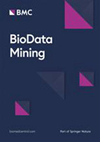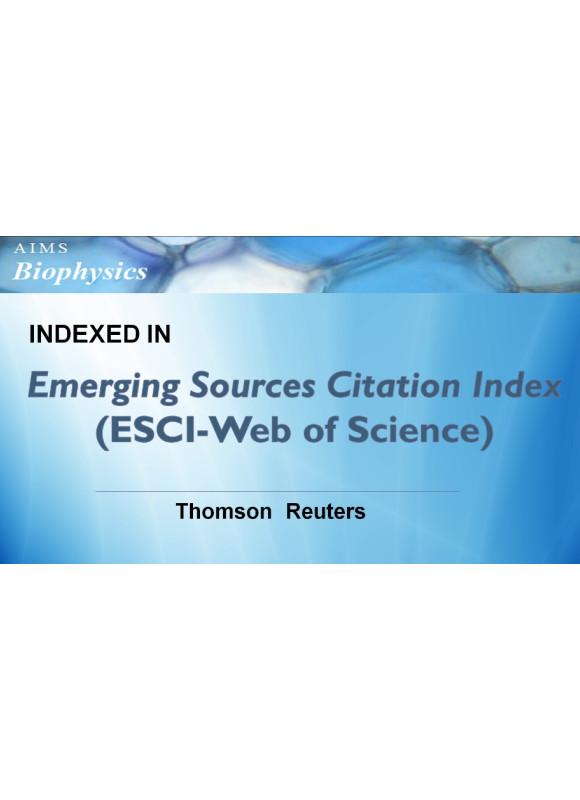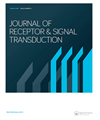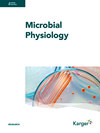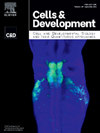Biodata MiningSCIE
国际简称:BIODATA MIN 参考译名:生物数据挖掘
- 基本信息:
- ISSN:1756-0381
- E-ISSN:1756-0381
- 是否OA:开放
- 是否预警:否
- TOP期刊:否
- 出版信息:
- 出版地区:ENGLAND
- 出版商:BioMed Central
- 出版语言:English
- 出版周期:1 issue/year
- 出版年份:2008
- 研究方向:MATHEMATICAL & COMPUTATIONAL BIOLOGY
- 评价信息:
- 影响因子:4
- H-index:23
- CiteScore指数:7.9
- SJR指数:0.958
- SNIP指数:1.413
- 发文数据:
- Gold OA文章占比:100.00%
- 研究类文章占比:93.75%
- 年发文量:32
- 自引率:0
- 开源占比:0.9896
- 出版撤稿占比:0
- 出版国人文章占比:0.2
- OA被引用占比:1
英文简介Biodata Mining期刊介绍
BioData Mining is an open access, open peer-reviewed journal encompassing research on all aspects of data mining applied to high-dimensional biological and biomedical data, focusing on computational aspects of knowledge discovery from large-scale genetic, transcriptomic, genomic, proteomic, and metabolomic data.
Topical areas include, but are not limited to:
-Development, evaluation, and application of novel data mining and machine learning algorithms.
-Adaptation, evaluation, and application of traditional data mining and machine learning algorithms.
-Open-source software for the application of data mining and machine learning algorithms.
-Design, development and integration of databases, software and web services for the storage, management, retrieval, and analysis of data from large scale studies.
-Pre-processing, post-processing, modeling, and interpretation of data mining and machine learning results for biological interpretation and knowledge discovery.
期刊简介Biodata Mining期刊介绍
《Biodata Mining》自2008出版以来,是一本生物学优秀杂志。致力于发表原创科学研究结果,并为生物学各个领域的原创研究提供一个展示平台,以促进生物学领域的的进步。该刊鼓励先进的、清晰的阐述,从广泛的视角提供当前感兴趣的研究主题的新见解,或审查多年来某个重要领域的所有重要发展。该期刊特色在于及时报道生物学领域的最新进展和新发现新突破等。该刊近一年未被列入预警期刊名单,目前已被权威数据库SCIE收录,得到了广泛的认可。
该期刊投稿重要关注点:
Cite Score数据(2024年最新版)Biodata Mining Cite Score数据
- CiteScore:7.9
- SJR:0.958
- SNIP:1.413
| 学科类别 | 分区 | 排名 | 百分位 |
| 大类:Mathematics 小类:Computational Mathematics | Q1 | 11 / 189 |
94% |
| 大类:Mathematics 小类:Computational Theory and Mathematics | Q1 | 17 / 176 |
90% |
| 大类:Mathematics 小类:Computer Science Applications | Q1 | 166 / 817 |
79% |
| 大类:Mathematics 小类:Genetics | Q1 | 76 / 347 |
78% |
| 大类:Mathematics 小类:Biochemistry | Q1 | 104 / 438 |
76% |
| 大类:Mathematics 小类:Molecular Biology | Q2 | 130 / 410 |
68% |
CiteScore 是由Elsevier(爱思唯尔)推出的另一种评价期刊影响力的文献计量指标。反映出一家期刊近期发表论文的年篇均引用次数。CiteScore以Scopus数据库中收集的引文为基础,针对的是前四年发表的论文的引文。CiteScore的意义在于,它可以为学术界提供一种新的、更全面、更客观地评价期刊影响力的方法,而不仅仅是通过影响因子(IF)这一单一指标来评价。
中科院SCI分区Biodata Mining 中科院分区
| 大类学科 | 分区 | 小类学科 | 分区 |
| 生物学 | 3区 | MATHEMATICAL & COMPUTATIONAL BIOLOGY 数学与计算生物学 | 2区 |
中科院分区表 是以客观数据为基础,运用科学计量学方法对国际、国内学术期刊依据影响力进行等级划分的期刊评价标准。它为我国科研、教育机构的管理人员、科研工作者提供了一份评价国际学术期刊影响力的参考数据,得到了全国各地高校、科研机构的广泛认可。
中科院分区表 将所有期刊按照一定指标划分为1区、2区、3区、4区四个层次,类似于“优、良、及格”等。最开始,这个分区只是为了方便图书管理及图书情报领域的研究和期刊评估。之后中科院分区逐步发展成为了一种评价学术期刊质量的重要工具。
JCR分区Biodata Mining JCR分区
| 按JIF指标学科分区 | 收录子集 | 分区 | 排名 | 百分位 |
| 学科:MATHEMATICAL & COMPUTATIONAL BIOLOGY | SCIE | Q1 | 8 / 65 |
88.5% |
| 按JCI指标学科分区 | 收录子集 | 分区 | 排名 | 百分位 |
| 学科:MATHEMATICAL & COMPUTATIONAL BIOLOGY | SCIE | Q1 | 10 / 65 |
85.38% |
JCR分区的优势在于它可以帮助读者对学术文献质量进行评估。不同学科的文章引用量可能存在较大的差异,此时单独依靠影响因子(IF)评价期刊的质量可能是存在一定问题的。因此,JCR将期刊按照学科门类和影响因子分为不同的分区,这样读者可以根据自己的研究领域和需求选择合适的期刊。
发文数据
- 国家/地区数量
- USA33
- CHINA MAINLAND18
- Israel5
- GERMANY (FED REP GER)3
- Russia3
- South Korea3
- Belgium2
- Brazil2
- England2
- Portugal2
本刊中国学者近年发表论文
-
1、Motif mining based on network space compression
Author: Qiang Zhang, Yuan Xu
Journal: BioData Mining, 2014, Vol.8, , DOI:10.1186/s13040-014-0029-x
-
2、An iteration normalization and test method for differential expression analysis of RNA-seq data
Author: Yan Zhou, Nan Lin, Baoxue Zhang
Journal: BioData Mining, 2014, Vol.7, , DOI:10.1186/1756-0381-7-15
-
3、Prediction of protein solvent accessibility using PSO-SVR with multiple sequence-derived features and weighted sliding window scheme
Author: Jian Zhang, Wenhan Chen, Pingping Sun, Xiaowei Zhao, Zhiqiang Ma
Journal: BioData Mining, 2015, Vol.8, , DOI:10.1186/s13040-014-0031-3
-
4、Mining causal relationships among clinical variables for cancer diagnosis based on Bayesian analysis
Author: LiMin Wang
Journal: BioData Mining, 2015, Vol.8, , DOI:10.1186/s13040-015-0046-4
-
5、Predicting linear B-cell epitopes using amino acid anchoring pair composition
Author: Weike Shen, Yuan Cao, Lei Cha, Xufei Zhang, Xiaomin Ying, Wei Zhang, Kun Ge, Wuju Li, Li Zhong
Journal: BioData Mining, 2015, Vol.8, , DOI:10.1186/s13040-015-0047-3
-
6、Accurate prediction of protein relative solvent accessibility using a balanced model
Author: Wei Wu, Zhiheng Wang, Peisheng Cong, Tonghua Li
Journal: BioData Mining, 2017, Vol.10, , DOI:10.1186/s13040-016-0121-5
-
7、A feature selection method based on multiple kernel learning with expression profiles of different types
Author: Wei Du, Zhongbo Cao, Tianci Song, Ying Li, Yanchun Liang
Journal: BioData Mining, 2017, Vol.10, , DOI:10.1186/s13040-017-0124-x
-
8、Elevated transcriptional levels of aldolase A (ALDOA) associates with cell cycle-related genes in patients with NSCLC and several solid tumors
Author: Fan Zhang, Jie-Diao Lin, Xiao-Yu Zuo, Yi-Xuan Zhuang, Chao-Qun Hong, Guo-Jun Zhang, Xiao-Jiang Cui, Yu-Kun Cui
Journal: BioData Mining, 2017, Vol.10, , DOI:10.1186/s13040-016-0122-4
投稿常见问题
-
请问这本期刊属于什么级别呢?可用于职称评定吗?
一般刊物只分省级、部级、核心,期刊本身是没有几类划分的,具体是几类或者几级,您可以对照单位的分类文件确认一下。Biodata Mining杂志是由BioMed Central出版的一本SCIE,可用于职称评定。
-
你们能够提供哪些核心期刊的咨询服务?
大多数核心期刊我们都是可以提供咨询服务的。目前核心期刊主要分为以下几类:1.国内核心:按照权威度排序,社科类:南大核心>南大扩展>北大核心>科技核心 按照权威度排序。工科类:CSCD C库>CSCD E库(相当于CSCD扩展)>北大核心>科技核心。2.国外核心(全英文):按照权威度排序为:SSCI=SCI>EI>ISTP=CPCI。
-
想快速发表,可以加急吗?
为了确保您的职称评定顺利进行,我们建议提前半年到一年开始准备,这样能够保证有充足的时间来处理所有相关事宜。如果客户需要加急服务,我们会与杂志社进行沟通,以确定是否可以提供加急服务。请注意,如果确认可以加急,可能会收取一定的加急费用。
-
你们提供的服务可以确保稿件被发表吗?
期刊编辑会综合考虑多个因素,如发表范围、学术价值和原创性等,对稿件进行综合评估。尽管任何机构均无法保证每篇稿件都会被发表,但我们可以用专业知识和丰富经验,协助您理解并遵循期刊的发表要求,从而提高您的稿件被发表的机率。
-
请问期刊发表的费用如何?
期刊发表的费用因期刊不同而异。根据您的需求,我们会为您推荐性价比最高的期刊,并提供专业的期刊供您选择。一般来说,只要符合职称要求,大多数作者都会选择性价比最高的期刊作为意向期刊进行重点咨询。我们会为您提供详细的期刊信息和费用说明,以确保您能够做出明智的选择。
-
如果稿件被拒,未能成功发表,费用是否可以退还?
一般来说,我们推荐的期刊和您的专业方向、文章情况都是匹配的,极少出现稿件被拒的情况。如果稿件被拒,期刊编辑会提供详细的拒稿信和建议,以帮助您了解拒稿原因并改进您的稿件。关于退款政策,具体情况可能因期刊不同而异,请您咨询我们的工作人员以获取详细信息。
相关期刊推荐
热门期刊推荐
-
Briefings In Bioinformatics
中科院 2区 JCR Q1
-
Computational And Structural Biotechnology Journal
中科院 2区 JCR Q2
-
Plant Physiology
中科院 1区 JCR Q1
-
Microbiological Research
中科院 1区 JCR Q1
-
Faseb Journal
中科院 2区 JCR Q1
-
Journal Of Molecular Cell Biology
中科院 2区 JCR Q2
-
Cell Communication And Signaling
中科院 2区 JCR Q1
-
American Journal Of Physiology-cell Physiology
中科院 2区 JCR Q1
